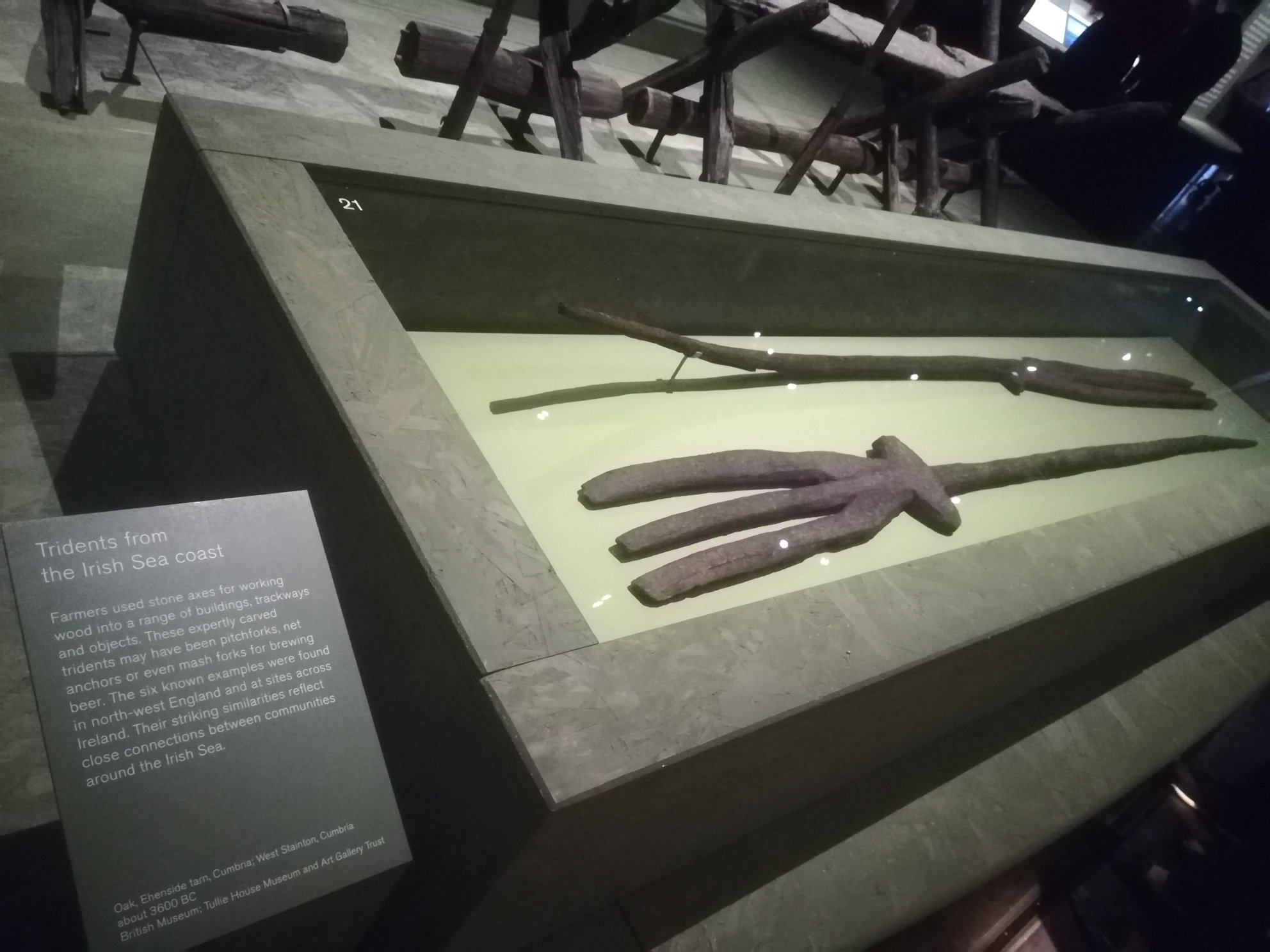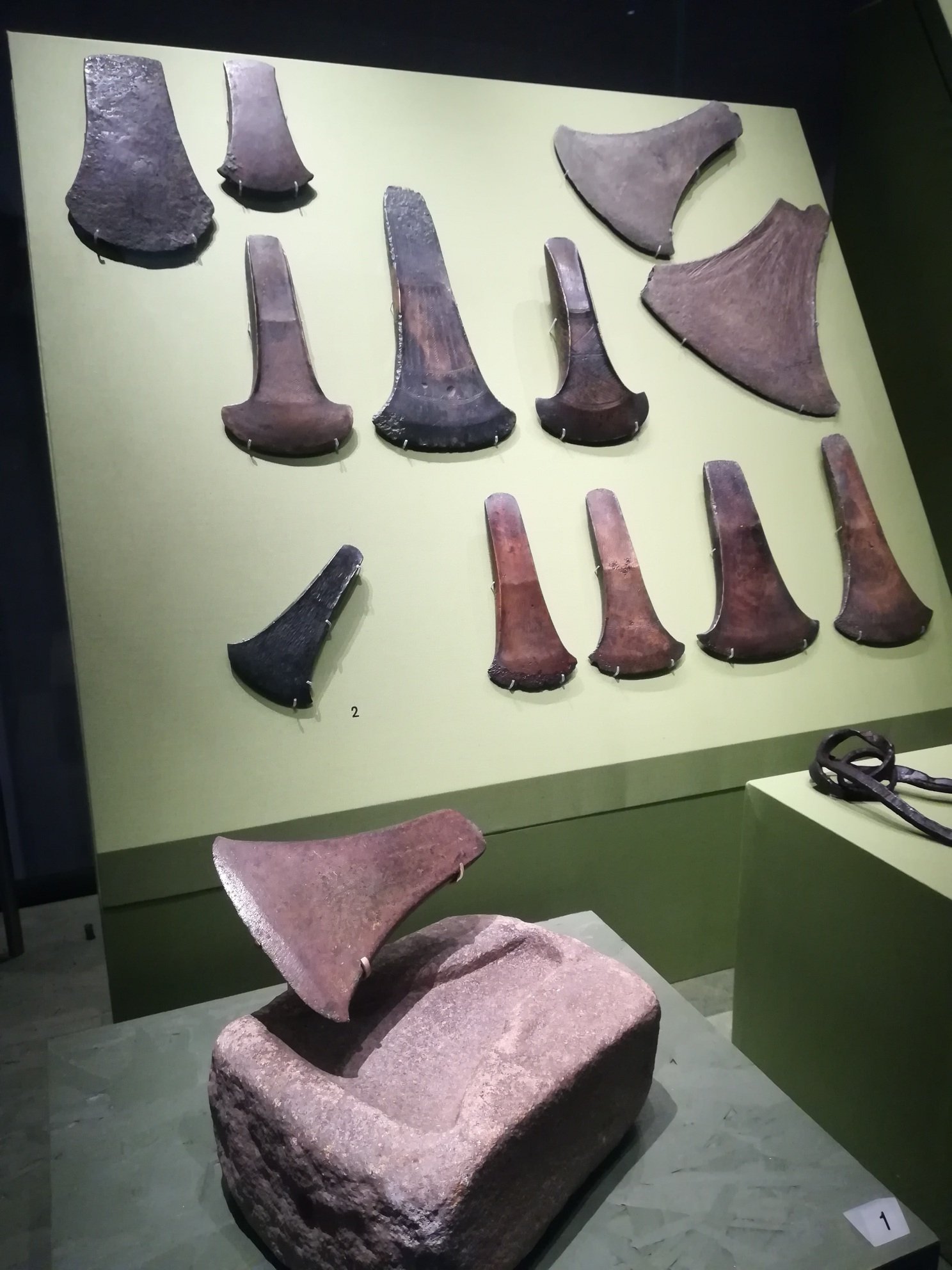Being British, Stonehenge has always been a huge part of our collective consciousness. When I studied Anthropology at university over 20 years ago, I did a semester on Stonehenge and dove deep into its various symbolism and meanings with one of the leading lecturers from the time, Lionel Sims. I had never seen the stone circle until I drove past it for the first time in 2009, off to meet the prospective in-laws. It didn't look that awe inspiring from the A303 on the grey winters day but I knew that there was power in those stones and this exhibition wanted to show this. The achievement of these Neolithic ancients is often overlooked in favour of the Egyptian pyramids or Mesopotamian state building and mathematics but Stonehenge and other such monuments in the British vista were cleverly conceived and executed. Stonehenge aligns to sunrise on the winter solstice, showcasing the mathematical prowess of these peoples but that seems to be forgotten in light of other achievements across the world.
The exhibition, which runs at the British Museum from 17 Feb 2022 - 17 Jul 2022, seeks to rehabilitate the opinion of these 'primitive' people but that is quite the achievement without the stones of the hour being present. The megalithic structures are obviously still in residence in Wiltshire but what we get instead is a smorgasbord of 430 artefacts in their stead. The items are not just from Britain but cover Neolithic life across Europe as there is evidence of trade and cooperation. Through a chronological process we learn of the hunter-gatherer communities in Europe using hewn stone hand axes to chop down trees and start to gain a mastery over the land. The communal meals and collaboration feeding their spiritual need to connect with each other and nature. This commune created a solid and strong sense of belonging and connection.
The sunstone is a stunning piece of carved artwork from Italy and is thought to be around 4500 years old!
We see the elaborate carvings and grave goods that shaped their spiritual outlook of the world and the belief in spirits in nature, and, of course, their deep veneration of the Sun and Moon. The 2500 BC carved sunstone from Italy is a true highlight showing the people and animals having a procession around the sun. Having it near the beginning of the exhibition shows the true value the peoples placed upon community and kinship. In fact, the whole first part of the exhibition showed the power of kinship and the power of shamanism connected this to the natural world.
The 4000 year old remnants of a meal, which showed the cooperation between hunter-gatherer communities and the first farmers, is a powerful touch that showed shifting communities. It was also at this time that we saw more ornate burials as individualism and power of the individual came to the fore.
The most impressive moment for me was Seahenge, a monument made of wood that had to be removed from its Norfolk seashore home to preserve it. It was discovered in 1998 and returns here like a phoenix, the aged wooden columns standing in the perfectly lit twilight be-lying its 4000 year vintage. This curious creation brings the outside in in a stroke of powerful liminality.
The next part of the exhibition looks at the origin of metal working in Britain and the profound change it brought about, from creating tools to jewelry. There was a profound shift in developing a more complex model of the cosmos and the new artistic flourishes, patterns and designs shows this. In this part of the exhibition we have one of the most beautiful artefacts of note, the controversial Nebra Disc from Germany. It was found by illegal treasure hunters and was taken by the authorities and examined. Its provenance is questioned, with some stating it to be Iron Age but others claiming it is older, but the piece itself is stunning. It offers a map of the night sky with the Pleiades (Seven Sisters) twinkling between the sun and a crescent moon. The turquoise green background is vividly set against the golden embellishments. It is stunning and shows the sheer craftsmanship at work and appreciation and understanding of the solar cycle.
The final section looks at how the influence of Europe affected the culture in England as the Beaker People from the Netherlands brought along their own values, such as burials with goods and burials within Stonehenge. The trading of goods and the exchanging of ideas and values led to conflict and the beginning of empires in Europe but the shared legacy remained.
I walked away from the exhibition profoundly moved and touched by the humanity in what I had seen. The sense of connection of people making their way in the hostile world through community, understanding and love was inspiring and still resonated over the millennia.
As the sun set at the end of the exhibition I felt enlightened and heightened.
LINK- Stonehenge Exhibition at the British Museum Website
LINK- William Blake vs. the World- Book Review
LINK- The Future Starts Here: An Optimistic Guide to What Comes Next- Book Review
LINK- Utopia for Realists- Book Review
LINK- Natives: Race and Class in the Ruin of Empire- Book Review
















